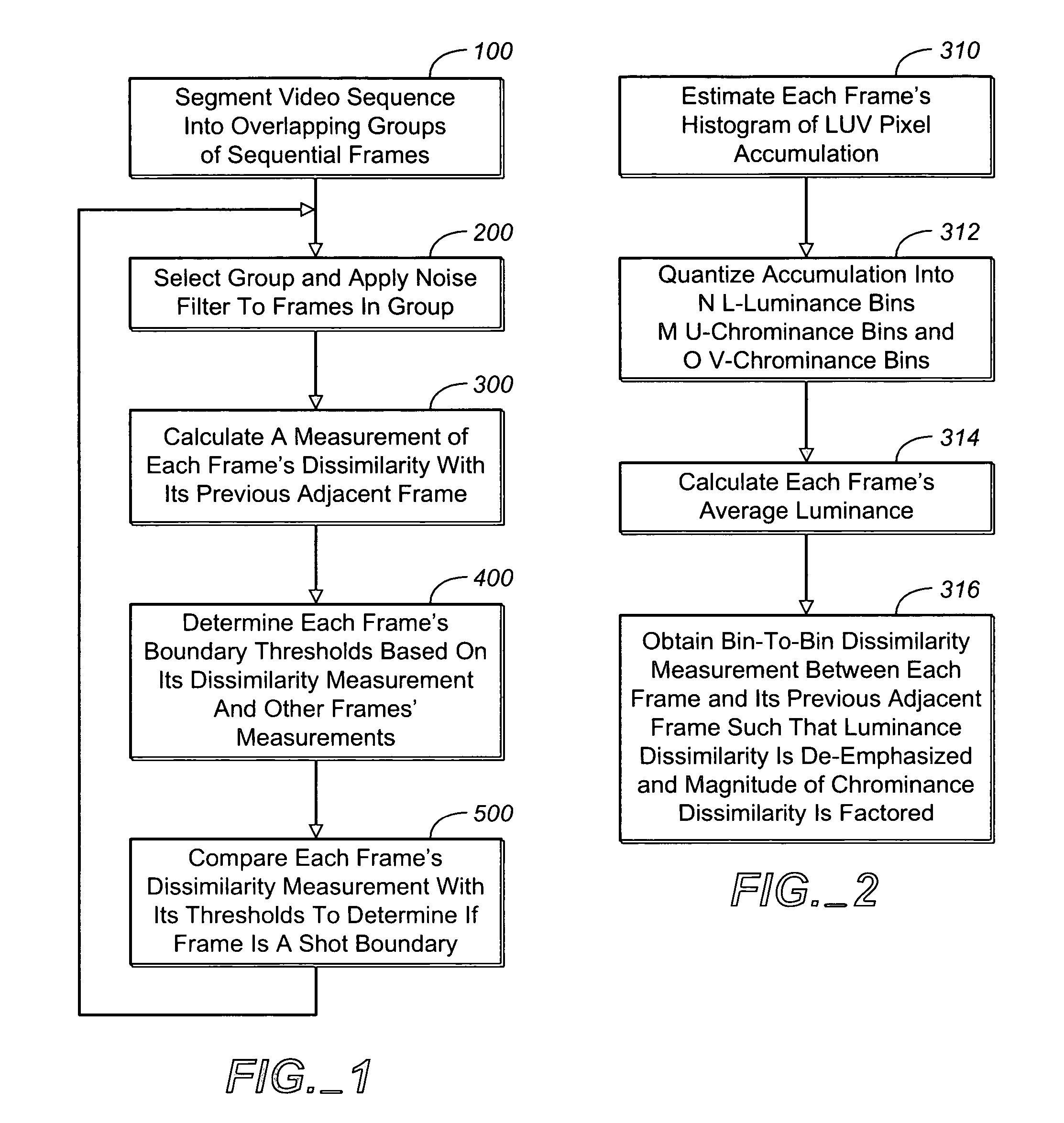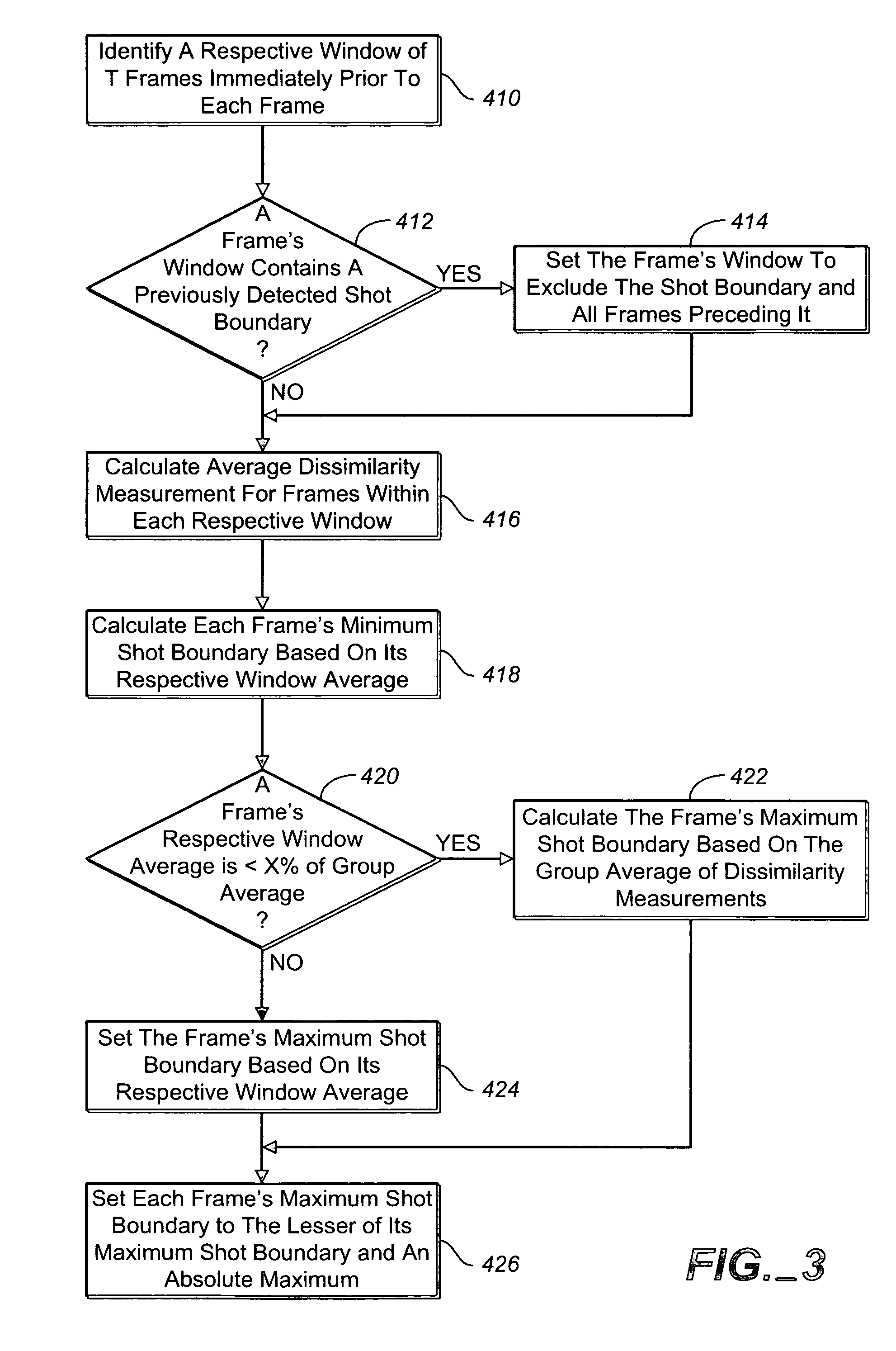Method and apparatus for estimating shot boundaries in a digital video sequence
a digital video and shot boundary technology, applied in the field of digital video processing, can solve the problems of limiting the effectiveness of shot boundary estimation to particular types of video sequence content, affecting the accuracy of shot boundary estimation, and reducing the relative contribution of luminance. , the effect of accurately determined
- Summary
- Abstract
- Description
- Claims
- Application Information
AI Technical Summary
Benefits of technology
Problems solved by technology
Method used
Image
Examples
Embodiment Construction
[0057] With reference to FIG. 1, the general steps performed during estimation of a shot boundary in a digital video sequence are shown. In this embodiment, the digital video sequence is captured by a digital video recorder, or is the result of a conversion from film or other analog medium into a digital video format. The format may be MPEG-1 (Motion Pictures Experts Group—format 1), MPEG-2, Windows Media, AVI (Audio Video Interleave), Quicktime, RealMedia or any other digital video format, whether stored compressed or uncompressed. In this example, it is assumed that the digital video sequence is uncompressed or has been decompressed, and is therefore in the form of a sequence of video frames.
[0058] Initially, the digital video sequence is segmented into overlapping groups of sequential frames in order to reduce the amount of computer system memory (i.e. RAM or the like) required for processing the digital video sequence (step 100). During processing of a particular group of seque...
PUM
 Login to View More
Login to View More Abstract
Description
Claims
Application Information
 Login to View More
Login to View More - R&D
- Intellectual Property
- Life Sciences
- Materials
- Tech Scout
- Unparalleled Data Quality
- Higher Quality Content
- 60% Fewer Hallucinations
Browse by: Latest US Patents, China's latest patents, Technical Efficacy Thesaurus, Application Domain, Technology Topic, Popular Technical Reports.
© 2025 PatSnap. All rights reserved.Legal|Privacy policy|Modern Slavery Act Transparency Statement|Sitemap|About US| Contact US: help@patsnap.com



